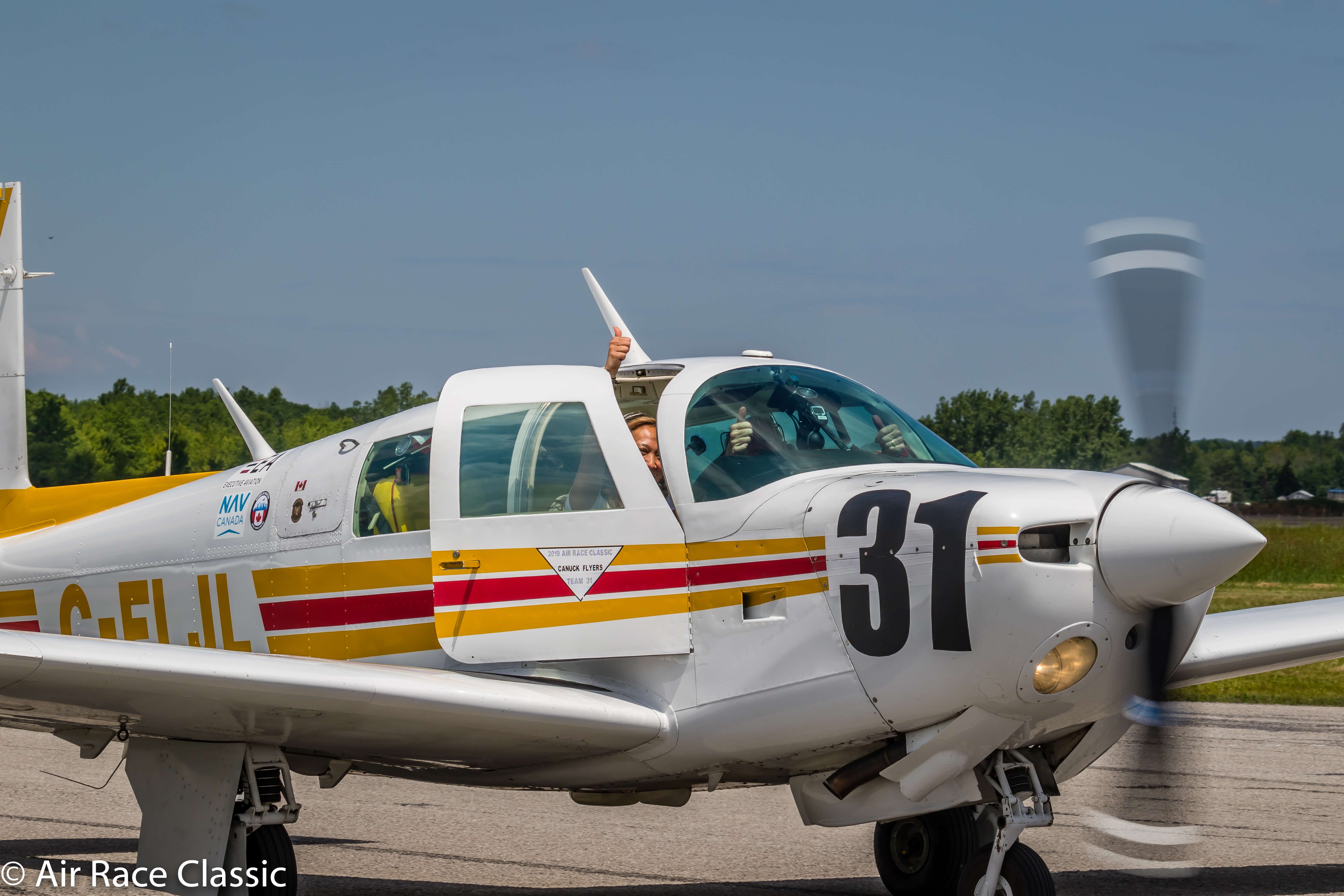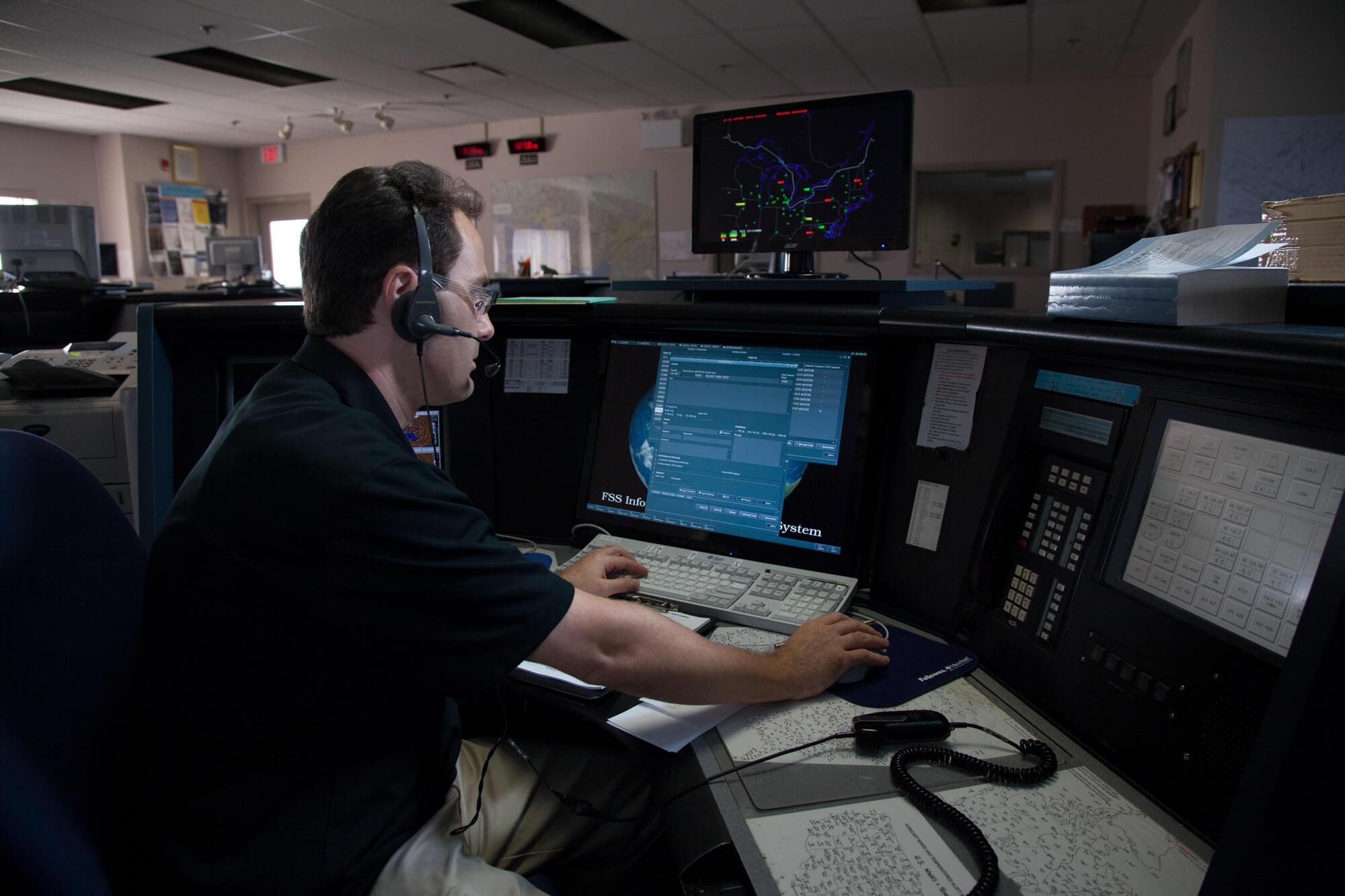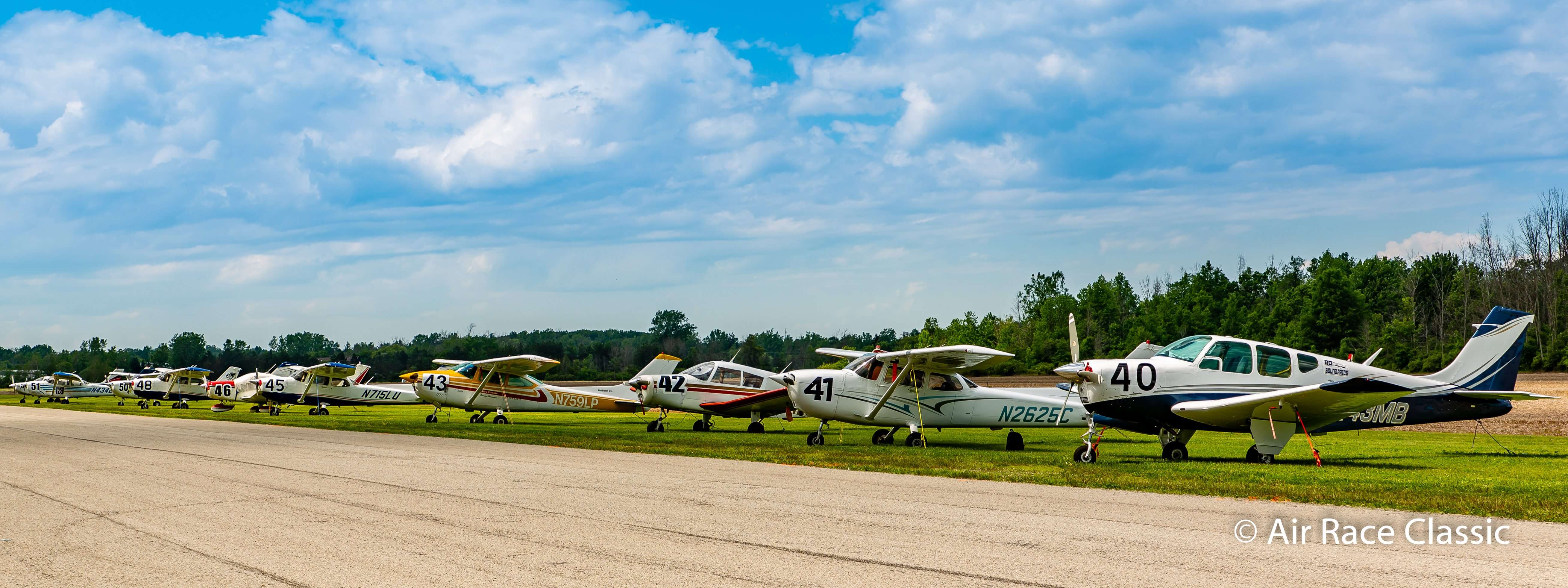







July 18, 2019
For the first time throughout 90 years of women’s air racing, the all-women Air Race Classic (ARC) flew into Canadian airspace – and NAV CANADA employees were pleased to provide the services needed to support this celebrated event. The 2019 ARC took place from June 18 to 21.
The theme for this year was “North of the Border – Let’s Fly Canada!” with four of the 12 designated airports on the race route in Canada. Over 100 pilots on almost 50 teams departed from Jackson, Tennessee at 30-second intervals. The course then wound through the US Midwest, crossing into Ontario for the final four points along the course – Sault Ste. Marie, North Bay, Brantford and Welland, where the race concluded. The race stops and extensive flights throughout Canada make this a unique version of the historic race.
The ARC is an annual race with roots that date back to the 1929 Women’s Air Derby. That initial Derby was comprised of 20 women, including legendary pilot, and the first elected President of the female pilots’ organization, the Ninety-Nines, Amelia Earhart. Conducted annually over four days in June, the Air Race Classic is a visual flight rules (VFR), daylight-only race with a course that changes every year.
Among the teams was the aptly-named “Canuck Flyers”, the only Canadian team in this year’s competition. Comprised of pilot Susan Begg and co-pilot Asti Livingston, the Canuck Flyers were sponsored by NAV CANADA, sporting the logo on the side of their Mooney 201.

Race rules
Each race team consists of at least two women pilots. Teams are required to fly to all predefined airports along the approximately 4,000 kilometre or 2,500 statute-mile course, flying a timing line at each location. Landing at each airport is optional and at the discretion of the race team, however, each team must land before sunset at a designated race stop.
Much of the race depends on the team’s strategy. They must decide how many legs they will fly each day, and at which stop (or stops) they plan to spend the night. The weather they encounter and their plane’s performance capabilities also come into play. Teams can complete the race in one day, or use the full four days.
So how do they determine the winners?
The winner is not necessarily the fastest team from the start of the race to the finish. The winner is determined by how fast the team flies, based on their aircraft’s maximum true air speed. In advance of the race, participating teams fly a handicap flight to measure the maximum true air speed of each of their aircraft. This speed is used to calculate how fast each team is flying during the race and allows for a level playing field.
The teams that most successfully exceed their handicap by the largest margin wins.
The addition of Canadian stops in the 2019 Race presented the participants with new challenges including different flight regulations and a stop to clear Canadian Customs. Despite the experience of the pilots, many had never flown into Canadian airspace so there was a great deal of advance preparation and communication among the Air Race Classic Executive team, the airport managers, Transport Canada and NAV CANADA. Discussions and planning began in the fall of 2018.
What follows is a brief look at NAV CANADA’s support for ARC 2019.

When in London
The NAV CANADA London Flight Information Centre (FIC) was contacted to help coordinate the air race last October and in the words of ARC Director, Theresa White, “everyone I coordinated with in Canada was exceptionally helpful and supportive.” The team at the London FIC spent a lot of time explaining weather in the region, briefings, and flight plans and provided helpful resources to share with the racers. “They all wanted to make sure they had the staff available to help in whatever way they could,” White added.
The flight information specialists at the London FIC were well prepared for the additional workload. They were pleased to support the racers with VFR alerting and advising them of weather and temperatures along their route – all to facilitate safe travel. This would be the first time many of the pilots would be entering Canadian airspace and they might need a little more support to dispel any concerns.
According to Team Supervisor, Paula Steffler, the coordination work done with ARC went extremely well and there was also great coordination with Transport Canada. “We were happy to do what we could,” said Steffler, “and we tried to coordinate and communicate ahead of time to address their needs.” Both she and White encouraged racers to talk to the team at the FIC, to file their flight plans with them, to get weather and NOTAM information and hopefully – demystify flying in Canada.
There was a minor bit of confusion with call signs, but this was quickly recognized.
“Some racers might give us their Classic Racer number or their civil registration, and we’d just find it and say – ‘Is this you? Okay, great’.”
Though not on the race route, London employees got a good sense of what was happening and kept an eye on the ARC website over breaks to share in the excitement.
“This is the first time that ARC has come to Canada,” said Steffler, “And it’s honouring women in aviation as well!”
Cross border stopping
Tim Carroll, Unit Operations Specialist, Sault Ste. Marie Tower was also contacted in advance by Theresa White from ARC and credits her for helping to ensure such a smooth operation during the race.
“I can’t say enough about how well the communication was,” said Carroll, “With Theresa running the race and then all the other groups involved, she got everybody talking well in advance and that really eased everything.”
Concern for the racers flying into Canadian airspace and clearing Customs was a big part of pre-race discussions, as well as local procedures, what to do when they arrived and who to call.
Racers were required to do a fly by at the airport in Sault Ste. Marie, Michigan at which point their race time was stopped. They were instructed to contact the NAV CANADA tower controllers the minute they completed the fly by and travel the additional 12 miles to Sault Ste. Marie, Ontario. to clear Customs. When they departed, they had to fly back down to the Sault in the US, fly over it again, and restart their time.
To facilitate this process, Carroll and his team worked out an arrangement with Customs (CANPASS). “As the racers were approaching Chippawa (Sault, US) we’d see them on the radar and give Customs a call so an agent would be ready to come out and meet the plane.”
As for the added workload related to the Race, Carroll stated that it didn’t have a major impact. “There were moments when a group of three or four racers would come through, along with our local traffic, and it got a little busy,” said Carroll, “So at times, it did increase the workload and the complexity for the guys and girls in the tower but they all handled it really well.”
Following the progress of racers on the ARC website helped the team prepare for these rushes.
Tim also spoke of the excellent Race support provided by all NAV CANADA sites involved, including the Toronto Area Control Centre (ACC). Many of the racers requested flight following because they were not familiar with or completely comfortable in Canadian airspace and the ACC controllers accommodated these requests.
The team at the Sault has received nothing but positive comments from organizers and pilots for their support.
“It was fun watching them all come in and I think the controllers liked it as well – and it seems the racers were having fun too,” said Carroll.
Gateway of the north
The North Bay Flight Service Station (FSS) was also brought into Race preparations back in the fall. Executives from the ARC planning committee flew in to discuss plans for the Race with Marc Kuzyk, Team Supervisor, North Bay FSS and the airport manager.
Once again, solid pre-planning eased apprehension for the pilots and the ARC planning committee as it pertained to local regulations and procedures. “We worked together to come up with approach procedures that would work here in North Bay,” said Kuzyk.
He also put them in touch with an aviation inspector at Transport Canada who supported ARC by issuing airspace NOTAMs advising other pilots that air race participants were conducting non-standard procedures at specific airports. ARC also received a special flight operation certificate (SFOC) from Transport Canada authorizing those non-standard race procedures.
Facilitating the racers and maintaining safety amidst local air traffic were the top priorities for the FSS team. “We put out a broadcast on our ATIS (Automatic Terminal Information Service) advising pilots in the area that this race was in progress and to please give way to the racers because it was imperative that they had a direct line from airport to airport,” said Kuzyk.
The North Bay team received an email from one of the COPA Directors advising them that the racers appreciated the support and enthusiasm received. They didn’t know what to expect, but said that they were very pleased with the hospitality and the services provided.
“I think this was a good event to showcase women in aviation and I know that NAV CANADA is working to recruit and increase the number of women in ATC services, and aviation in general,” said Kuzyk.

The perfect ending
The Race continued on to Brantford and then to the Niagara Central Dorothy Rungeling Airport in Welland – a fitting Terminus for this 90th Anniversary, Let’s Fly Canada, all-women air race. The Airport had been renamed in honour of Dorothy Rungeling who passed away in 2018 at the age of 106. She was the first woman in Canada to fly a helicopter solo and among the first Canadian women to obtain a pilot’s licence in 1949. She too was an air racer and had a deep desire to keep this exciting activity alive. Before her passing, Dorothy was made aware that the 2019 Air Race Classic would conclude at the airport bearing her name.
Despite the storied history of women in aviation, there is still work to be done to encourage more young women to consider a career in this industry. That’s why organizations and events like ARC are so important.
For a list of ARC winners and more information about the organization go to their websiteOpen a new window.